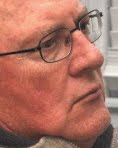The Butterworth Filter
The Butterworth filter is a class of filters that meet certain mathematical characteristics and performance characteristics that can be met by certain filter types both passive and active. The Butterworth filter theory was developed by Stephen Butterworth in 1930. The theory is still applied today.
A Butterworth filter is maximally flat in the pass band-- that is no ripples, and has a monotonic shape in its pass band and in its stop band. The Butterworth filter is the only type that is monotonic in the stop band as opposed to Bessel, Chebyshev, and elliptic filter types which are not. In the stop band, the Butterworth filter rolls off at a rate of -20db per decade for each order. First order is -20db slope. Second order is -40db. Third order is -60db, etc. But the Butterworth filter does not have as sharp a cut-off slope as the other filter types. The Butterworth filter has a more linear phase response in its pass band.
The transfer function for the Butterworth filter can be written in terms of its poles of its characteristic equation (the denominator of the function.) There are no zeroes in the function which accounts for its monotonic characteristic.
H(S) = Ho /(II(k=1,n) (S-Sk)/Wc)
Ho = DC gain
II(k=1,n) means the product of the factors to follow
S=complex radian frequency = j*2*Pi*f
Sk’s = roots or pole locations in terms or radian frequency
Wc = j*2*Pi*Fo , the radian frequency for the cut-off frequency Fo
k,n is an index range for the product of factors to indicate the order of the filter from 1 to order n
The Butterworth polynomials have been calculated for normalized Butterworth filters (by setting the cut-off radian frequency Wc = 1.) We will list the first 3 Butterworth polynomials here. Higher orders can be looked up in standard tables found in most filter texts, or on the Internet by searching on “Butterworth filters.”
n=1 s+1
n=2 s^2 + sqrt( 2) * s + 1
n=2 (s + 1) * (s^2 + s + 1)
The root of the above polynomials are all negative and lie on the unit circle surrounding 0,0 on the complex plane.

No comments:
Post a Comment